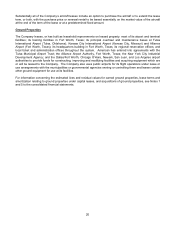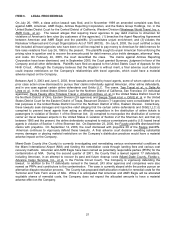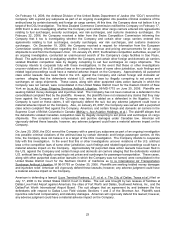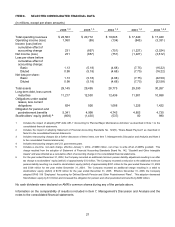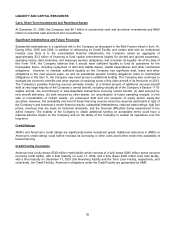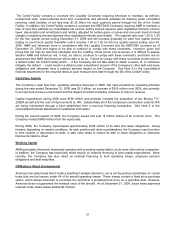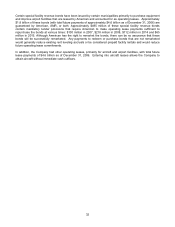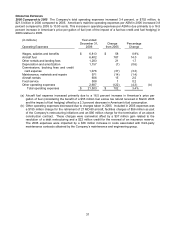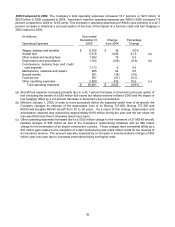American Airlines 2006 Annual Report Download - page 33
Download and view the complete annual report
Please find page 33 of the 2006 American Airlines annual report below. You can navigate through the pages in the report by either clicking on the pages listed below, or by using the keyword search tool below to find specific information within the annual report.29
Under the Turnaround Plan, the Company has implemented hundreds of cost savings initiatives estimated to
save approximately $3.5 billion in annual expense. In combination with the Company’s 2003 restructuring of
labor and other contracts, these initiatives have more than offset the Company’s non-fuel inflationary and other
cost pressures during this period. Employee productivity (measured in available seat miles per equivalent head)
and aircraft productivity (measured in miles flown per day) have consistently increased under the Turnaround
Plan and established new Company records in 2006.
The Company has also implemented numerous efforts to find additional revenue sources and increase existing
ones. In addition to improving core passenger and cargo revenues, these efforts have contributed to a 36
percent increase in Other revenues since 2004 to $1.4 billion in 2006.
As part of its effort to build greater employee involvement, the Company has sought to make its labor unions and
its employees its business partners in working for continuous improvement under the Turnaround Plan. Among
other things, the senior management of the Company meets regularly with union officials to discuss the
Company’s financial results as well as the competitive landscape. These discussions include (i) the Company’s
own cost reduction and revenue enhancement initiatives, (ii) a review of initiatives, in-place or contemplated, at
other airlines and the impact of those initiatives on the Company’s competitive position, and (iii) benchmarking the
Company’s revenues and costs against what would be considered “best in class” (the Company’s Performance
Leadership Initiative).
The Company’s ability to become consistently profitable and its ability to continue to fund it obligations on an
ongoing basis will depend on a number of factors, many of which are largely beyond the Company’s control.
Certain risk factors that affect the Company’s business and financial results are discussed in the Risk Factors
listed in Item 1A. In addition, four of the Company’s largest domestic competitors have filed for bankruptcy in the
last several years and have used this process to significantly reduce contractual labor and other costs. In order
to remain competitive and to improve its financial condition, the Company must continue to take steps to generate
additional revenues and to reduce its costs. Although the Company has a number of initiatives underway to
address its cost and revenue challenges, the ultimate success of these initiatives is not known at this time and
cannot be assured.



